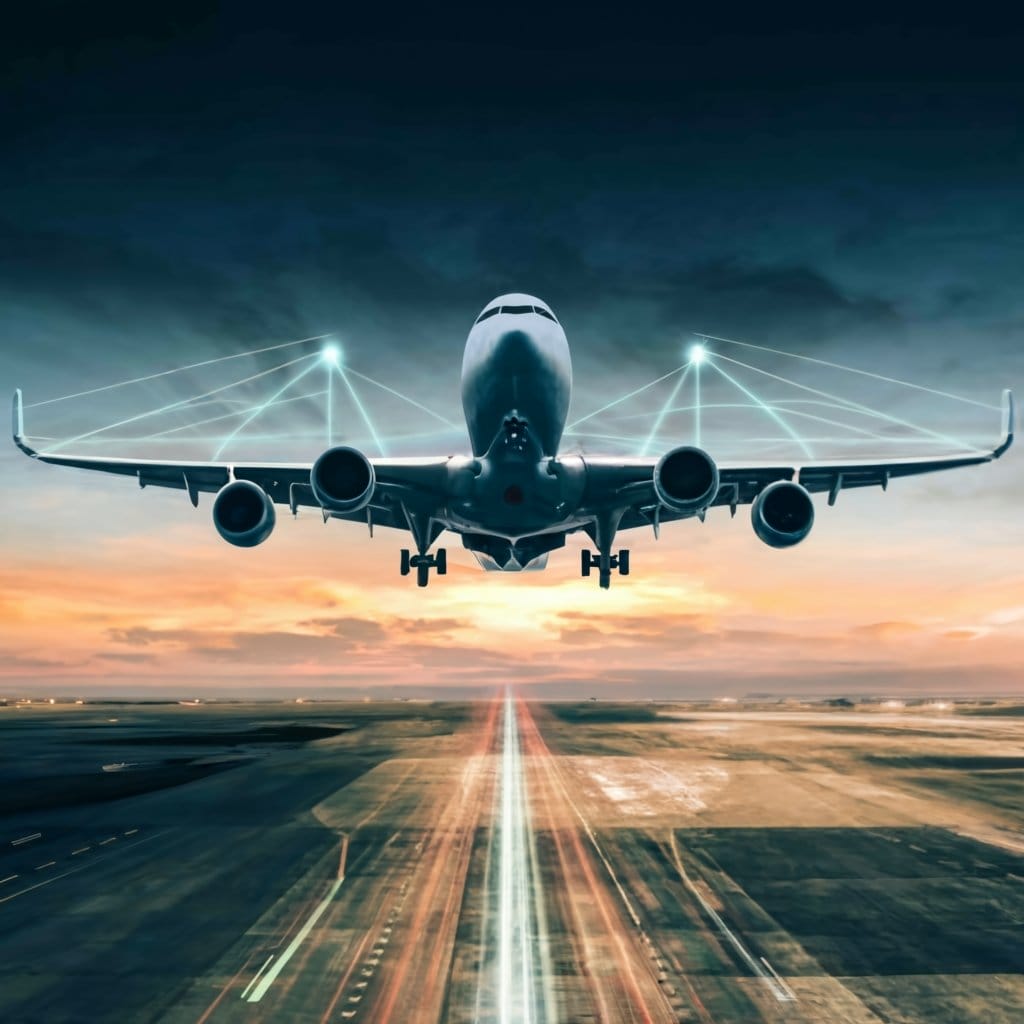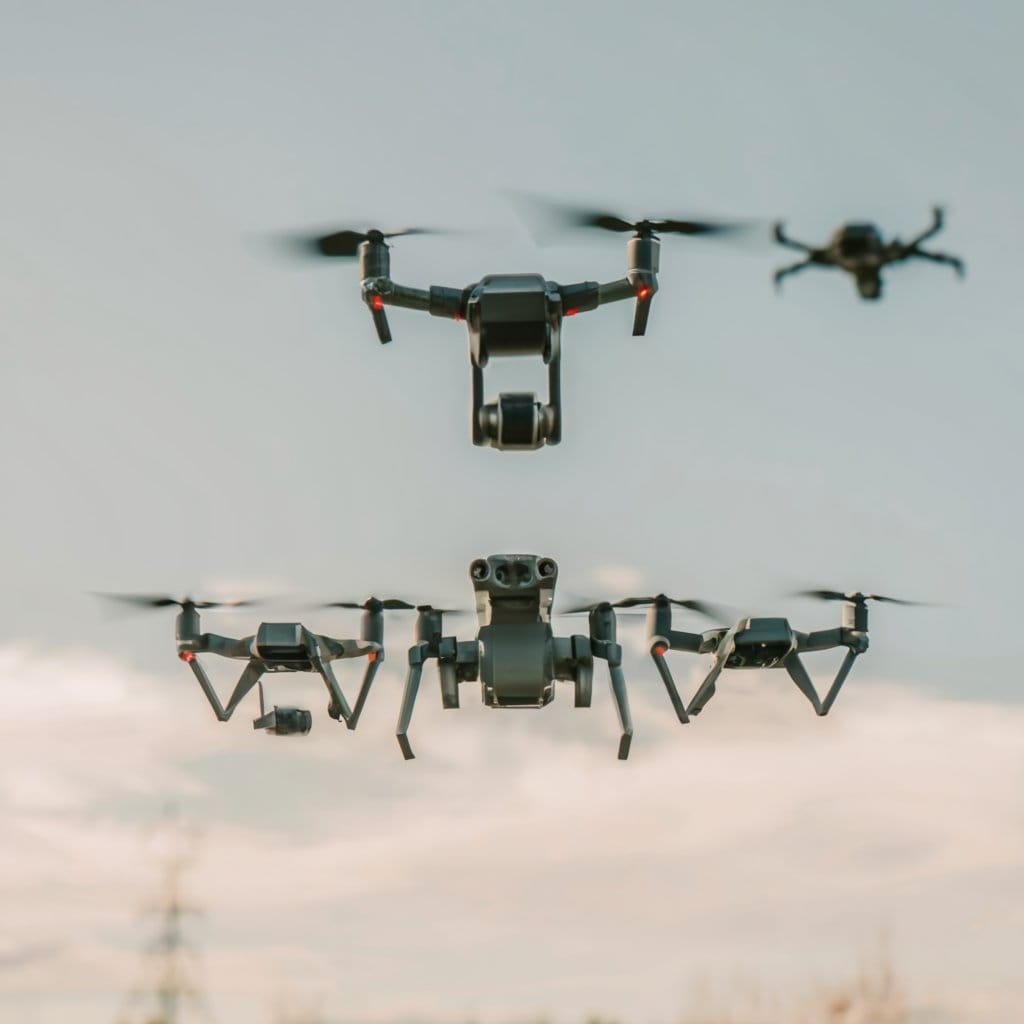Emergence of AI in Aviation
The aviation and aerospace realms are rapidly changing after integrating Artificial Intelligence (AI). It plays a pivotal role in the industry’s future. AI has impacted various aspects of aviation, from aircraft design to flight operations. It has emerged as a transformative force pushing the aviation industry into a new era. It is essential to thoroughly analyze AI’s current involvement in flight operations and ground procedures to understand the future of AI in aviation fully.
It is clear from significant advancements in aviation industry that AI and aviation have a symbiotic relationship. Intelligence systems are redefining the boundaries of air travel. The innovative applications have optimized current operations and laid the foundations for extraordinary developments in 2030 and beyond.

Growth Trajectory of AI in Aviation
The growth trajectory of aviation is accelerating with AI as a pivotal force. The Increasing impact of AI on safety and efficiency within the industry can’t be denied. Industry reports highlight the increasing role of AI in aviation, from optimizing flight paths to enhancing passenger experiences. It is bringing a new era of technological advancements. Aviation companies reveal a strategic acceptance of AI, where cutting-edge technologies are integrated into operational frameworks. This relationship between aviation and AI automation ensures enhanced safety measures and propels the industry toward unparalleled levels of efficiency. It sets the stage for a future where the intersection of technology and aviation becomes the hallmark of progress.
AI into pilotless flights
AI in flight operations is leading to a new era. The start of pilotless flights, powered by advanced AI algorithms, represents a ground-breaking shift in the conventional aviation school of thought. AI can analyze vast datasets in real time to make split-second decisions. You would be surprised to know that the first pilotless flight has been approved for passengers carrying up to two persons onboard or about 270 Kilograms of cargo. This dream is being materialized by a China-based technology platform named EHang. It is a leading manufacturer of autonomous aerial vehicles (AAVs) worldwide. Many future possibilities are opening up after the success of EHang’s pilotless air taxis.
According to McKinsey, the air taxi industry will surge significantly by 2030. They predict that there will be a rise in passenger advanced air mobility services and a potential fleet size in the year 2030. Honeywell also shares this positive outlook for the industry and anticipates a boom in air taxi growth by 2030. Although no specific numbers are provided, the consensus is that the air taxi market is poised for substantial expansion in the next decade.
AI Automation in Drones and Air Traffic Management
The aviation industry is advancing with the help of AI applications, resulting in more incredible innovation and efficiency. Autonomous aircraft and drones equipped with classy AI systems represent a groundbreaking shift in approaching aerial operations. These autonomous wonders showcase the integration of artificial intelligence, revolutionizing tasks from surveillance to delivery services.
AI’s transformative role extends to air traffic management, where advanced algorithms and predictive analytics enhance precision, safety, and overall operational effectiveness. For example, Heathrow Airport in London is considered one of the busiest airports in the world, as it handles more than 81 million passengers in a year. You would be surprised to know that it utilizes AI to manage take-offs and landings more efficiently. Technology is opening the horizon for unlimited skies after the intersection of AI and aviation.
Human-AI Collaboration in Aviation
The aviation industry is passing through a transformative era after the mutual relationship between humans and AI. In human-AI collaboration, aviation professionals are leveraging the strengths of both entities by integrating AI technologies to enhance decision-making processes. Pilot training takes a revolutionary turn with the assistance of AI. Innovative technologies contribute to efficient and thorough training programs to produce skilled aviators.
Besides the cockpit, AI augmentation plays a vital role in aircraft design and maintenance. These intelligent systems streamline processes and ensure optimal performance. This harmony of human expertise and AI innovation elevates operational efficiency. It resultantly knocks at the doors of a future where the human touch remains indispensable in the aviation stream.
Economic Impacts of AI in Aviation
The infusion of artificial intelligence has significantly impacted the aviation industry. AI has emerged as a catalyst that has enhanced operational capabilities and adopted unmatched efficiencies in the industry. The integration of AI has become a driving force behind improved profitability, achieved through cost-efficiency measures. Airlines and aerospace industries are leveraging intelligent technologies to optimize resource utilization.
Market trends and forecasts witnessed a dramatic transformation, with a surge in innovative solutions and adaptive strategies, and this all happened after AI entered the aviation industry. The synergy between economic advancements, cost-effectiveness, and proactive market trends gives AI a pivotal role in shaping the future of the aviation industry.
Aviation Leaders and AI Pioneers
Aviation and AI intersect to bring industry voices, expert opinions from aviation leaders, and perspectives from AI pioneers under one roof. These thought leaders contribute rich knowledge with their experience and pioneering spirit that propels the aviation realm forward. The insights from aviation leaders are shaping the industry’s trajectory. Meanwhile, the perspectives of AI pioneers illuminate the path ahead from the fusion of aviation and artificial intelligence. Experts are sensing the nerve that the aviation sector is steered towards unparalleled innovation and efficiency with the help of AI.
Privacy Concerns in AI-driven Aviation
As artificial intelligence takes a prominent role in aviation technologies, questions of ethical implications arise. It demands a delicate balance between innovation and responsible use. Privacy concerns echo in the corridors of AI development due to individuals’ private information. This can only be done with the help of happy compromise to harness the full potential of AI in the aviation landscape.
Aviation in 2030: Will AI dominate?
The field of aviation is in a constant state of development and change. As we look ahead to 2030, predicting future scenarios requires careful consideration and strategic planning. Debates continue regarding whether AI will dominate or bring collaboration within the aviation industry. When predicting the future of aviation, we must navigate a complex interplay of technology, regulation, and societal expectations.
The industry stands at a crossroads, contemplating the extent to which AI will shape and redefine the aviation experience—whether it be through autonomous flight, enhanced safety protocols, or a blend of human-machine collaboration. This fuels the imagination and underlines the vital role that strategic planning and innovative solutions will play in shaping the aviation landscape in the years to come.
Final Thoughts on future of AI in Aviation
We must find a way to navigate the future skies in the ever-changing world of aviation. The key to unlocking the full potential of a safer and more efficient aviation landscape is striking a balance between human expertise and artificial intelligence (AI) capabilities. The aviation and aerospace industry is on the verge of a paradigm shift that requires a forward-thinking approach. Many ask whether artificial intelligence (AI) will dominate the industry by 2030. While the extent to which AI will impact the sector remains to be seen, the journey is expected to be transformative, complex, and undoubtedly captivating.
What is the current impact of AI on the aviation industry?
The current impact of Artificial Intelligence (AI) on the aviation industry is transformative. AI optimizes fuel consumption, reduces emissions, and enhances overall operational efficiency. According to Vaughn College, AI manages fuel consumption and emissions, addressing environmental concerns and improving cost-efficiency by avoiding the operation of half-empty planes.
How is AI driving innovations in machine learning algorithms for aviation?
AI is a driving force behind innovations in machine learning algorithms for aviation. Attract Group highlights how AI algorithms analyze vast datasets, enabling predictive maintenance and corrective actions that prolong the aircraft’s lifespan, ensuring safety and efficiency.
Will we see pilotless flights by 2030 due to AI advancements?
AI advancements fuel the prospect of pilotless flights by 2030. While the debate continues, Will Robots Take My Job mentions ongoing discussions about AI and robots potentially replacing commercial pilots.
How does AI contribute to aerodynamics and aircraft design efficiency?
AI significantly contributes to aerodynamics and aircraft design efficiency. Integrating AI into design processes benefits the aviation industry from improved aerodynamics and fuel efficiency, as highlighted by a LinkedIn article on AI in aviation and aerospace market trends.
What safety measures and regulations govern AI integration in aviation?
Safety measures and regulations governing AI integration in aviation are critical. ALG Global explores challenges and solutions, emphasizing the need to integrate digital solutions into aviation safety regulations.
In what ways is AI transforming air traffic management and routes?
AI is transforming air traffic management by optimizing routes and enhancing operational efficiency. According to a blog by ALG Global, AI’s integration into air traffic management systems accommodates the complexities of modern airspace, ensuring safe and efficient operations.
How is AI incorporated into pilot training programs and aircraft maintenance?
AI is becoming integral to pilot training programs and aircraft maintenance. This integration enhances skill development and decision-making in pilot training, and it streamlines maintenance processes, ensuring optimal aircraft performance.
What economic implications and market trends are associated with AI adoption in aviation?
The economic implications of widespread AI adoption in aviation are substantial. AI contributes to cost-efficiency and profitability. For the latest market trends and forecasts, Attract Group provides insights into the comprehensive view of the economic landscape shaped by AI technologies in the aviation sector.



